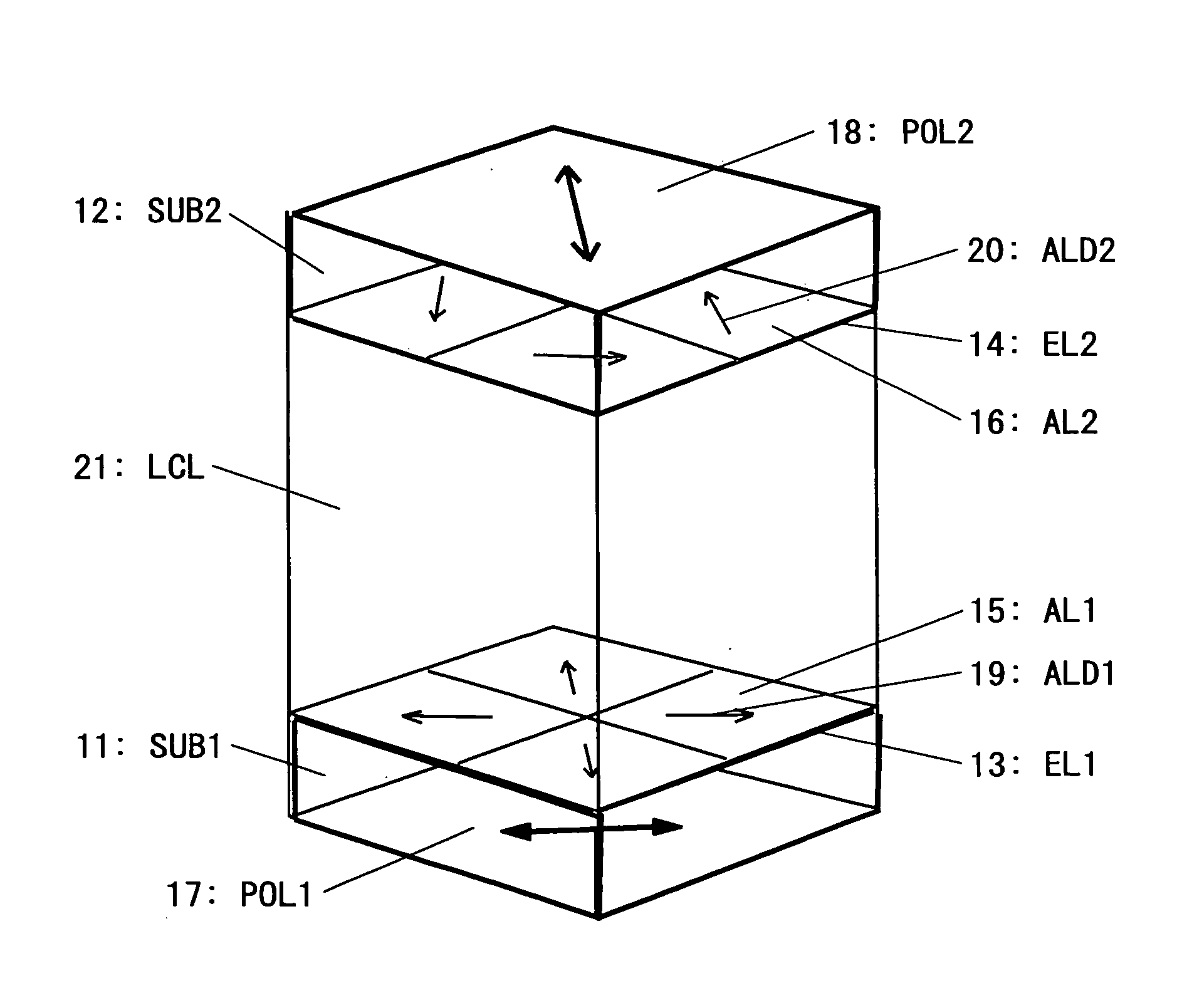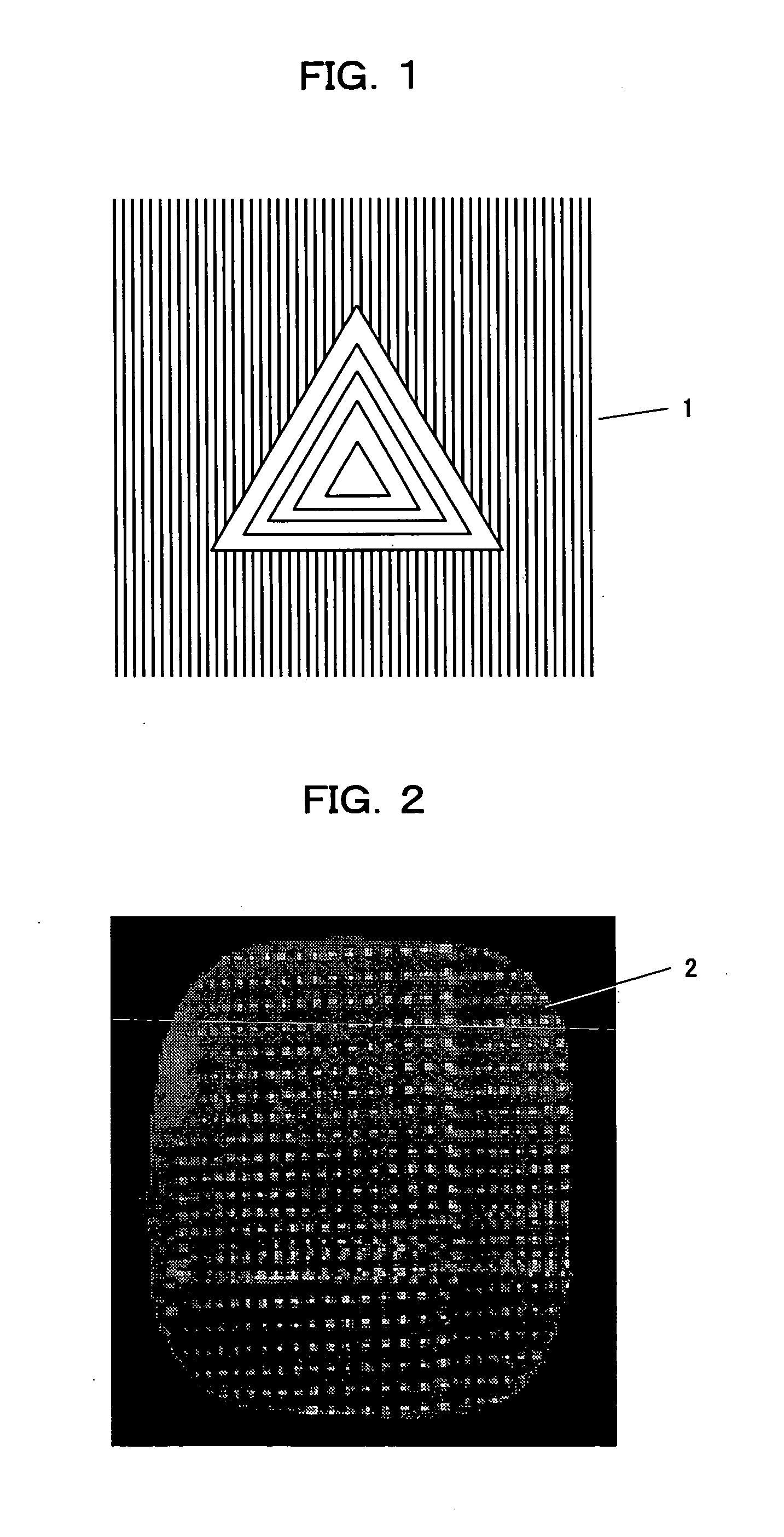Liquid crystal display element
a technology of liquid crystal display and display element, which is applied in non-linear optics, instruments, optics, etc., to achieve the effect of reducing the number of photomasks and the number of irradiation steps
- Summary
- Abstract
- Description
- Claims
- Application Information
AI Technical Summary
Benefits of technology
Problems solved by technology
Method used
Image
Examples
embodiment 1
[0051]FIG. 4 is a view showing the structure of a liquid crystal display device according to Embodiment 1 of the present invention.
[0052] In the figure, reference numeral 11 indicates a substrate (SUB1), reference numeral 12 indicates another substrate (SUB2), reference numeral 13 indicates a transparent electrode (EL1), reference numeral 14 indicates another transparent electrode (EL2), reference numeral 15 indicates an alignment layer (AL1), reference numeral 16 indicates another alignment layer (AL2), reference numeral 17 indicates a polarizer (POL1), reference numeral 18 indicates another polarizer (POL2), reference numeral 19 indicates a liquid crystal alignment direction (ALD1), reference numeral 20 indicates another liquid crystal alignment direction (ALD2), and reference numeral 21 indicates a liquid crystal layer (LCL).
[0053] Two transparent glass substrates each having a thickness of 1.1 mm and a polished surface were used as the substrate 11 (SUB1) and the substrate 12 ...
embodiment 2
[0069] Embodiment 2 of the present invention will now be described.
[0070] A liquid crystal display device of Embodiment 2 was fabricated as in Embodiment 1 except for the following. One of the substrates included an alignment layer having the orientation pattern (in FIG. 5) thereon. The other substrate did not include the alignment layer. Furthermore, a chiral dopant CB-15 from Merck & Co., Inc. was added to the liquid crystal material such that the length of helical pitch of the composition corresponded to about ¼ of the cell gap.
[0071] This liquid crystal display device provided the same advantages as those in Embodiment 1 except for the following. In this case, because of the function of the chiral dopant, a TN display structure as in Embodiment 1 was provided in which the liquid crystal orientation was twisted by about 90 degrees between the upper and lower substrates when no voltage was applied.
[0072] According to the measurement of the viewing angle by the same method as in...
embodiment 3
[0073] Embodiment 3 of the present invention will now be described.
[0074] A liquid crystal display device of Embodiment 3 was fabricated as in Embodiment 1 except for the following. In Embodiment 1, the light irradiation was performed two times per substrate using two photomasks shown in FIGS. 5(a) and 5(b) for one substrate, and two photomasks shown in FIGS. 6(a) and 6(b) for the other substrate. Instead, in Embodiment 3, the light irradiation was performed three times per substrate using three photomasks 71 to 73 shown in FIGS. 9(a), 9(b), and 9(c), and three photomasks 81 to 83 shown in FIGS. 9(d), 9(e), and 9(f), respectively.
[0075] Each substrate was irradiated with linearly polarized ultraviolet light with the photomasks shown in FIGS. 9(a), 9(b), and 9(c), or with those shown in FIGS. 9(d), 9(e), and 9(f), in that order. The linearly polarized ultraviolet light was irradiated in the directions diagonal to lines A-A′, B-B′, and A-A′, respectively.
[0076] In Embodiments 1 and...
PUM
| Property | Measurement | Unit |
|---|---|---|
| thickness | aaaaa | aaaaa |
| pretilt angle | aaaaa | aaaaa |
| thickness | aaaaa | aaaaa |
Abstract
Description
Claims
Application Information
 Login to View More
Login to View More - R&D
- Intellectual Property
- Life Sciences
- Materials
- Tech Scout
- Unparalleled Data Quality
- Higher Quality Content
- 60% Fewer Hallucinations
Browse by: Latest US Patents, China's latest patents, Technical Efficacy Thesaurus, Application Domain, Technology Topic, Popular Technical Reports.
© 2025 PatSnap. All rights reserved.Legal|Privacy policy|Modern Slavery Act Transparency Statement|Sitemap|About US| Contact US: help@patsnap.com



